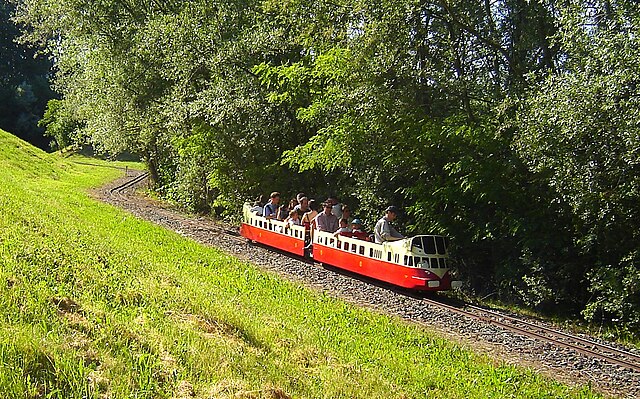The Bure Valley Railway is a 15 in minimum gauge visitors' attraction in Norfolk, England. It was created on the original disused full-gauge bed of a defunct passenger service to incorporate a new, adjacent pedestrian footpath.
Bure Valley Railway
Aylsham station's large train shed, with visiting RHDR No. 1 'Green Goddess'.
This girder bridge takes the Bure Valley Railway over the River Bure. The bridge is 105 feet long and by far the largest bridge on the line.
Bure Valley Railway track approaching Aylsham, showing how the formation is split between the railway and permissive footpath.
Fifteen-inch gauge railway
Fifteen-inch gauge railways were pioneered by Sir Arthur Percival Heywood who was interested in what he termed a minimum gauge railway for use as estate railways or to be easy to lay on, for instance, a battlefield. In 1874, he described the principle behind it as used for his Duffield Bank Railway, distinguishing it from a "narrow-gauge" railway. Having previously built a small railway of 9 in gauge, he settled on 15 in gauge as the minimum that he felt was practical.
Romney, Hythe and Dymchurch Railway
Ravenglass & Eskdale Railway
One of the Chemin de fer Touristique d'Anse's X131 when passing through the hills







